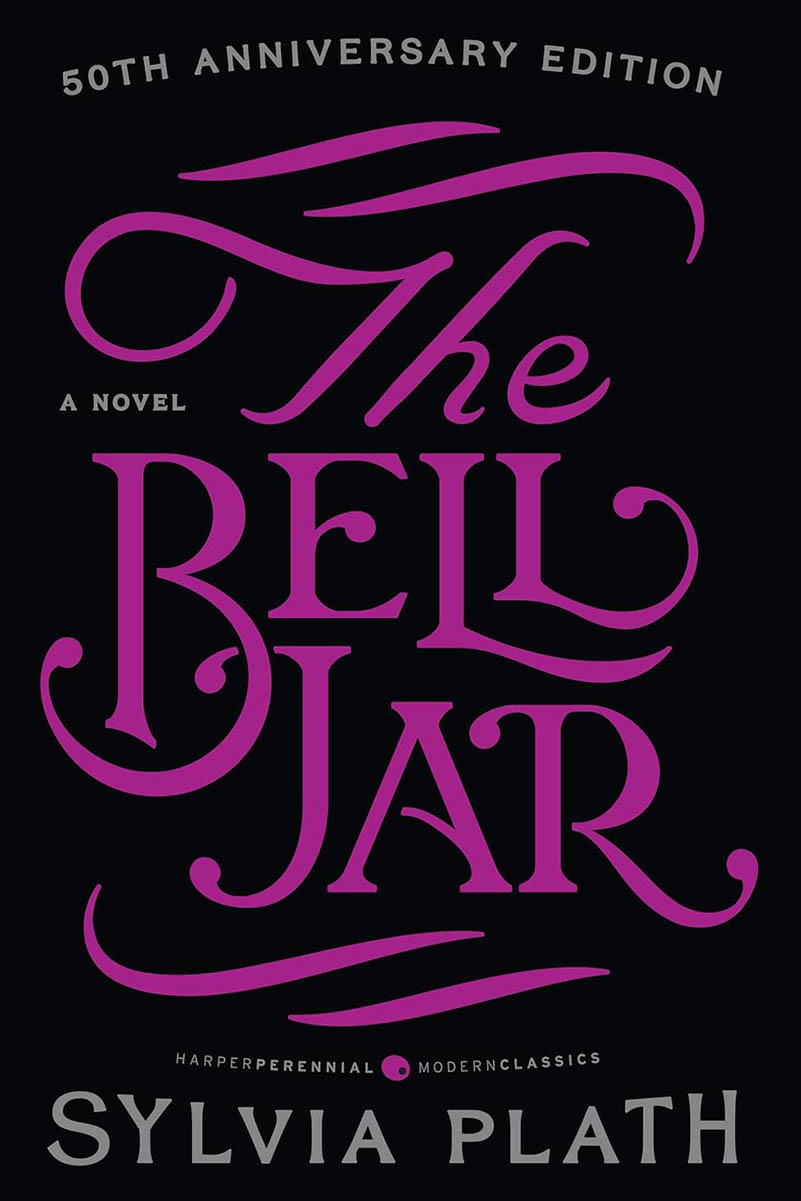The Bell Jar
by Sylvia Plath
“The floor seemed wonderfully solid. It was comforting to know I had fallen and could fall no farther.” This quote from
Sylvia Plath’s The Bell Jar perfectly describes the novel. It captures Esther’s state of mind in the latter half of the book – she has fallen (her suicide attempt), cannot fall deeper, and has nowhere to go but up.
The Bell Jar explores the life of Esther Greenwood, an American college girl in the 1950s. Esther aspires to a career in writing but feels pressured to become a housewife. She feels different from the other women around her, for example, while classmates would go out on dates on Saturday nights, she would stay alone in her room to write.
While working as a guest editor at a women’s magazine with eleven other girls she disdains their goals feeling that they are destined to marry the next boy that impregnates them. Throughout the book, Esther feels suffocated by the low expectations of those around her because of her gender. Although she dislikes the lifestyle of these ‘average’ women, a part of her wants that normalcy. This resembles Plath’s own feelings about motherhood and her career.
She writes in her journal, “I want to write stories and poems and a novel and be Ted’s wife and a mother to our babies.” (Although it is vital to mention that she and her husband, Ted Hughes, had a difficult relationship. Many of her works were never published or edited to paint Hughes in a better light, so one might choose to take this quote with a grain of salt, since the alterations are unknown.)
As the novel progresses, Esther begins to go mad as she battles with her inner thoughts as well as with the people around her. She is admitted to various psychiatric facilities after numerous suicide attempts. Even when she is submerged in chaos, Esther still has trivial goals, such as to lose her virginity. She wants to ‘even out’ the playing ground with Buddy, whom she had previously dated. Buddy tells her he is not a virgin, although he is wholly expectant of Esther to remain one until they marry. This act of rebellion is one she does to disconnect herself from other women who ‘save’ themselves for their future husbands when men rarely do the same. She does lose her virginity, but not the way she had expected. After profusely bleeding, she is admitted to the hospital. After being released, Esther is finally sent back home and makes plans to begin her winter semester at college.
A bell jar is often used to showcase specimens of bugs. Esther thinks of herself as such a bug, by the feeling of being constantly on display, near her struggles that she cannot hide from, but also by having a close eye kept on her after her breakdown. She knows that her bell jar may tip over at any moment and release her pent-up anguish, and she may never be truly safe. The bell jar also distorts the object with its curved glass edges and slightly magnifies it. For Plath, The Bell Jar is almost semi-autobiographical. Like Ester does, Plath also took an internship at a women’s magazine, attempted suicide, and felt the same pressures.
Plath wrote The Bell Jar in 1961 and released it mere months before her suicide in 1963. The internal turmoil Plath endured when writing her only novel is on vivid display. Esther’s suicide attempt by overdosing on pills very closely mirrors one of Plath’s. Esther is a figment of her mind, and therefore, is a part of her. Plath does little to distinguish the character’s personality from her own.
The Bell Jar is a classic and one of my favorite novels; the reader can witness a woman who originally appears normal and well-functioning and her journey to her suicide attempt and the aftermath. By being strikingly alike to Sylvia Plath’s own battle with depression, one that she ultimately lost, the novel illuminates what outcome she may have wished to have for herself. The Bell Jar ends on a more hopeful note, with Esther believing that she has a life worth living.



